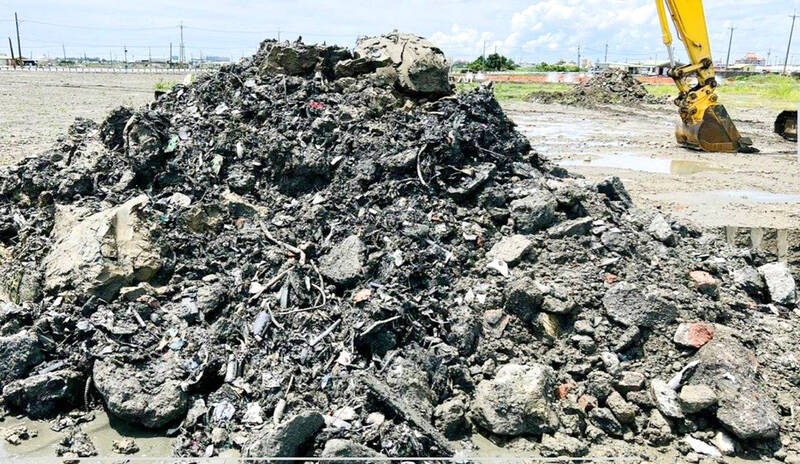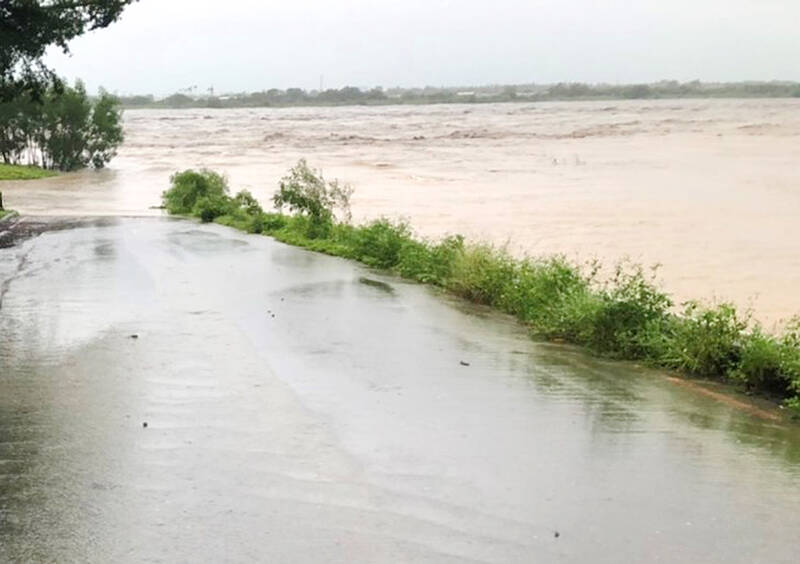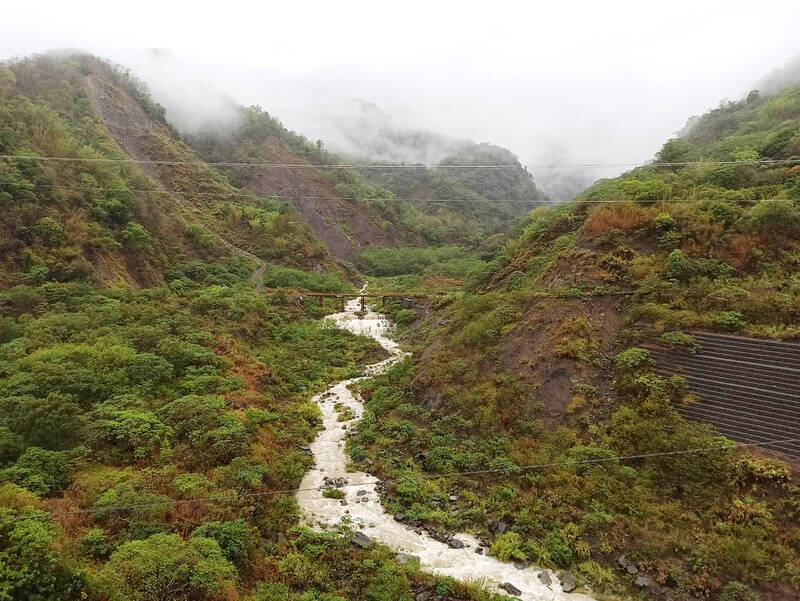Stephen King, the famed horror writer, once observed that post-apocalypse novels are essentially impossible. Nuclear plants would melt if human civilization disappeared, while chemical plants and pipelines and other infrastructure would poison the earth. Organized life would be impossible. Could it happen here?
This year the Taiwan Climate Change Projection Information and Adaptation Knowledge Platform (TCCIP), which is supported by the Ministry of Science and Technology, produced its 10-year assessment of local climate research: The Taiwan Climate Change Projection Information and Adaptation Knowledge Platform: A Decade of Climate Research.
The platform and numerous climate-related policies were spurred by the disastrous typhoon Morakot in 2009. The catastrophic rainfall generated floods and landslides across southern Taiwan, killing over 600, and inundating a dozen towns with debris flows and flooding. Belatedly government agencies began to creak slowly into action to respond to the threat.

Photo: Tsai Ching-hua, Taipei Times
‘NATIONAL ADAPTATION STRATEGY’
In 2013, after the usual rounds of meetings and discussions, the government formed a National Adaptation Strategy in 2013. This was a five-year plan involving 399 proposed actions. The second plan ended in 2018, and the nation is currently wrapping up the third iteration of the program, the 2018-2022 plan.
The government has produced a slew of legislation related to this initiative, including a spatial planning act (2016), a wetlands conservation act (2013) and a coast zone management act (2016).

Photo courtesy of reader
It looks neat, clean, progressive and organized. So it’s interesting to compare it with the recent report from Taiwan Plus on the possibility that there are over 400 illegal factories on farmland in Yilan. The Yilan government claimed in the report that it lacked the manpower to check them out.
Let’s put that comment in perspective: when a friend in Taitung County changed the roof over his porch, the government was out there within a few days, citing satellite photos of the new structure. That also happened to another friend nearby who simply hung up a gigantic tarp to keep the sun off his outdoor dining table. The bureaucrats had to return home disappointed after they rushed out to see what new “structure” he had erected.
The government monitors Taiwan’s land use via satellites. In fact, in 2017 it released a report showing there were over 50,000 illegal factories on farmland, a result of satellite studies intended to support the government’s land use zoning programs under the 2016 spatial planning act. A 2020 report from the Ministry of Agriculture noted 130,000 such factories.

Photo courtesy of the EPA
Nor are these firms all tiny mom-and-pop operations churning out cheap plastic crap. Some of them are firms listed on the Taiwan Stock Exchange, with tens of million in revenues. In 2019 the owners of these factories even formed a lobbying group called Tian Yuan (田園) to fight environmentalist efforts to get them removed.
These factories, so important in Taiwan’s land speculation ecology, are critical to other ecologies. Their waste, periodically the subject of bitter complaints by locals and fruitless media reports, is often buried along rivers and in the mountains, via a network of firms who dump unprocessed waste to make money.
FLOODING AND POLLUTION
It isn’t easy to model what will happen with Taiwan, according to TCCIP’s report. Most climate models lack resolution at Taiwan’s smaller scale. But most models show increases in extremes of precipitation, which will result in massive sediment discharges into major rivers, along with increased landslide disasters in upland areas.
Extensive flooding will result: as rivers fill with sediment their beds rise, meaning that they hold less water even as water levels spike due to extreme rainfall events.
Simulation studies of Taiwan’s river basins show how bad things will get. Kaohsiung’s Kaoping River (高屏溪) basin was evaluated in a 2016 paper published in Natural Hazards.
The reason that the Kaoping River was selected was that climate models show that precipitation in the south will increase, especially in the Kaoping River basin. The study used SOBEK, the model officially used by the Water Resources Agency, to simulate the flooding that will occur regularly by the end of the century.
In case the reader imagines that will be a long time from now, recall that climate models are quite conservative, that climate problems are now arriving more rapidly than models predicted and that by mid-century the problem will be obvious, just a quarter-century from now. Indeed, the most recent risk maps generated in the TCCIP paper above show that the Kaoping basin is largely composed of townships colored red and yellow for risk by the mid-century.
In the models published in Natural Hazards, the riverbed rises 1.24 meters due to sedimentation, resulting in flooding along the river whenever it rains hard. Daliao District (大寮) in Kaohsiung will experience the worst floods, but it will be bad everywhere, far worse than Morakot. And it will happen repeatedly.
The Kaoping River area is, like so many other flood-vulnerable areas, carpeted with factories, illegal and legal. Pingtung County’s Hsinyuan Township (新園), where the river meets the sea, is the ancient epicenter of illegal dumping of waste, decades ago filled with sludge from factories in the surrounding area.
But the Kaoping River basin as a whole is an environmental disaster. In Kanding Township (崁頂) next to Hsinyuan, according to a 2020 Commonwealth Magazine piece (“The ‘Ghost’ Shadowing Taiwan’s Industrial Polluters,” July, 2020), fields are strewn with sacks of aluminum slag that leak aluminum waste. Water and sediment from those farms eventually end up in the Kaoping River or the nearby ocean.
Fish ponds, the article observed, many located along the river, are routinely rented by waste-disposal firms who fill them up with waste, concrete them over and then put up prefab buildings which they rent out as factories, or cover them with solar panels.
Consider Daliao, which can expect the worst of the flooding. It hosts an industrial zone, the Kaohsiung city garbage dump and innumerable factories. It is also the site of a former military base. The town is chock full of interesting toxic waste.
Every factory and waste disposal site in Taiwan is a time bomb, but in the Kaoping basin, the time bomb clock is closest to zero. In a mass precipitation event the mud would not only be dangerous but toxic, and flooding would spread it across the basin’s farmlands and low-lying residential districts. Recall that many areas of Pingtung County, especially by the ocean, are below sea level due to overuse of groundwater.
Another issue with increased sedimentation is the reservoirs in the south. The Zengwen Reservoir (曾文水庫), which waters the Chiayi and Tainan plain, was already suffering badly from silting when Morakot knocked out 13 percent of its capacity at one blow. Disasters like that will be a regular feature of our future of alternating droughts (which also increase silting) and extreme precipitation.
The key to resolving these issues is reform of Taiwan’s land system to accommodate its factories. Factory owners crowd onto farmland while land in industrial districts goes undeveloped, held by speculators who drive prices out of the reach of small factory owners. Local governments are broke and eagerly collect taxes from illegal factories.
All this must change. Because there is no post-apocalypse.
Notes from Central Taiwan is a column written by long-term resident Michael Turton, who provides incisive commentary informed by three decades of living in and writing about his adoptive country. The views expressed here are his own.

That US assistance was a model for Taiwan’s spectacular development success was early recognized by policymakers and analysts. In a report to the US Congress for the fiscal year 1962, former President John F. Kennedy noted Taiwan’s “rapid economic growth,” was “producing a substantial net gain in living.” Kennedy had a stake in Taiwan’s achievements and the US’ official development assistance (ODA) in general: In September 1961, his entreaty to make the 1960s a “decade of development,” and an accompanying proposal for dedicated legislation to this end, had been formalized by congressional passage of the Foreign Assistance Act. Two

Despite the intense sunshine, we were hardly breaking a sweat as we cruised along the flat, dedicated bike lane, well protected from the heat by a canopy of trees. The electric assist on the bikes likely made a difference, too. Far removed from the bustle and noise of the Taichung traffic, we admired the serene rural scenery, making our way over rivers, alongside rice paddies and through pear orchards. Our route for the day covered two bike paths that connect in Fengyuan District (豐原) and are best done together. The Hou-Feng Bike Path (后豐鐵馬道) runs southward from Houli District (后里) while the

March 31 to April 6 On May 13, 1950, National Taiwan University Hospital otolaryngologist Su You-peng (蘇友鵬) was summoned to the director’s office. He thought someone had complained about him practicing the violin at night, but when he entered the room, he knew something was terribly wrong. He saw several burly men who appeared to be government secret agents, and three other resident doctors: internist Hsu Chiang (許強), dermatologist Hu Pao-chen (胡寶珍) and ophthalmologist Hu Hsin-lin (胡鑫麟). They were handcuffed, herded onto two jeeps and taken to the Secrecy Bureau (保密局) for questioning. Su was still in his doctor’s robes at

Mirror mirror on the wall, what’s the fairest Disney live-action remake of them all? Wait, mirror. Hold on a second. Maybe choosing from the likes of Alice in Wonderland (2010), Mulan (2020) and The Lion King (2019) isn’t such a good idea. Mirror, on second thought, what’s on Netflix? Even the most devoted fans would have to acknowledge that these have not been the most illustrious illustrations of Disney magic. At their best (Pete’s Dragon? Cinderella?) they breathe life into old classics that could use a little updating. At their worst, well, blue Will Smith. Given the rapacious rate of remakes in modern